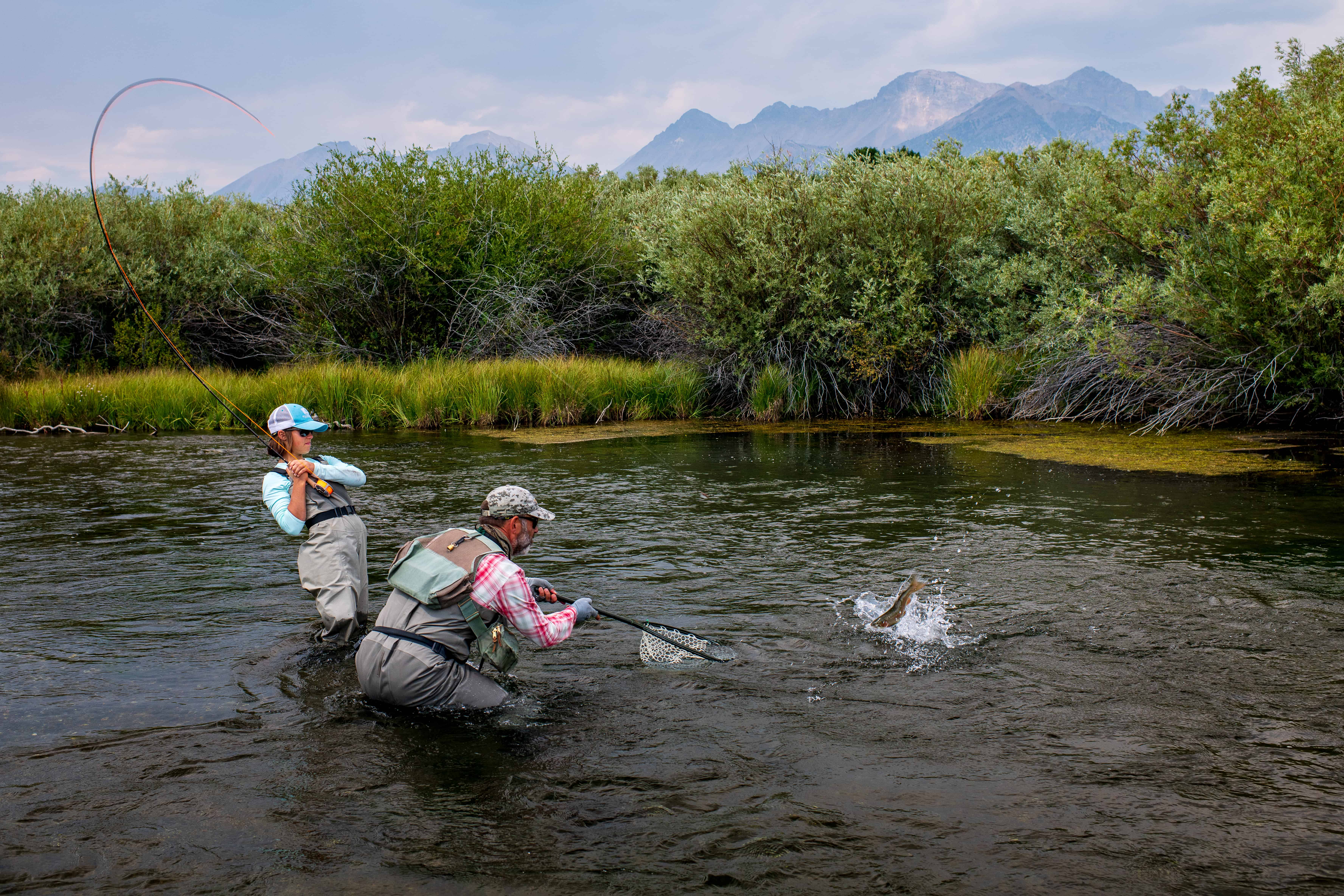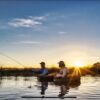“In a life properly lived, you’re a river.” ~Jim Harrison
When angling well, you are not at odds with a river, nor a victim to its indifference. You are the river, one with the surroundings, flowing as the river flows. When angling well, your relationship to the water is not mere simile, you are not “like” or “as” a river. The allegory is more complete. Be the river this September.
Silver Creek
There is still some late morning action with the few Tricos along with some Baetis spinners. However, the activity has shifted to hoppers and Callibaetis in the afternoon. Fall Callibaetis are smaller than the early season Callibaetis, so you will need to have plenty of size 18 and 20s in all phases of this insect’s life cycle: nymphs, emergers, duns and spinners. Look for them in the sloughs and slow water stretches of the upper and lower Kilpatrick’s Pond. The fly is easily identified by its rhythmic bouncing just above the water as it prepares to lay its eggs. On windy days, try a size 16 or 18 Hackle Stackers along with a Quigley Cripple or the Callibaetis Floating Nymph. When the water is still, try Harrop’s Partridge Spinner or Harrop’s Cutwing Dun in a size 18. Also watch the weather forecast over the next few weeks as cloudy, cool days will trigger fantastic Baetis hatches. These Baetis are small and you will need patterns in size 20, 22, and 24 to match the hatch. For this bug, size is more important than color and fish should take a well presented fly. Also, be prepared for some Mahogany Duns as they will make an appearance as the days get shorter and cooler weather becomes the norm.
Big Wood
If you are looking for consistent action close to town, the Wood is the right choice. This river continues to fish incredibly well. There is no need to go early, but once the fishing gets started it stays good all the way until the sun leaves the water in the evening. This time of year, the fish tend to spread out and can be found in every part of a run. Aggressive feeders will be right in the aerated heads of the riffles. Sippers can be found on the slow edges and in the seams as well as at the tail-outs and slicks. Approach the water carefully and scan the water for feeders in the shallows. These fish can be spooky so exercise caution. If the light is bad, try using small Gulper Specials (16 or 18) with orange posts which show up nicely in the glare and light chop of riffles. Also, Red Quills should appear in the South Valley and begin to make their way up river. Terrestrials have also been a good bet, especially hoppers and flying ants. Trailing a small size 16 or 18 Zebra Midge in red or black, a pheasant tail, Bishop’s Dynamite, Iron Lotus, Frenchy, or a Rainbow Warrior can also be effective.
Upper Big Lost
If scenery and solitude are paramount for a day on the water, this is a good choice. To be successful, cover lots of water. Look for the deeper runs and you should find a handful of trout. The trout will only give you one chance, so make your first presentation count. Otherwise, be prepared to walk a long way to the next fishy spot. Try a Para Hopper, a flying ant, or an Elk Hair Caddis in size 14, 12 or 10 with a small trailing Zebra Midge, Bishop’s Dynamite, or Rainbow Warrior. If you find some feeders, use small size 18 parachute patterns, a long leader, and fine tippet.
The Lost Below Mackay
While the wading is challenging in spots with flows just under 350 CFS, the fishing has been good. Expect to find Trico and Baetis hatches mid-morning, but finding rising fish is a challenge. Nymphing remains the most effective method. Try standard dry dropper rigs or fish Euro Style techniques. The best patterns include Rubber Leg Stones, San Juan Worms, and King Princes in the heavy runs. For the shallow water, try small nymphs like Zebra Midge, Bishop’s Dynamite, Beaded Pheasant Tails, and Rainbow Warriors in size 16, 18, and 20 below an attractor dry of your choice. If you find rising fish, have a good selection of high vis Tricos and Baetis.
The Salmon
The Salmon and its tributaries continue to fish well. The water levels are perfect for a day of hole hopping from access to access. Try using bright colored attractor dries with orange and red, like Stimulators or Royal Chubby Chernobyls, while searching the seams and riffles. Nymphing with a King Prince, a Bishop’s Dynamite, or Rubber Legged Stone is also very productive.
South Fork of the Boise
The flows have come done and are holding steady at just above 600 CFS, perfect for wade fishing. Try a hopper along the bank or skittering a crane fly across dancing water. A smattering of Flavs and Pink Alberts should appear in the early afternoon. Even a few beatis are beginning to make their midday appearance. Your best option is to search the water with hoppers and a trailing nymph unless you find a fish feeding selectively on one of the above-mentioned mayflies. Also, deep nymphing with caddis larva, PTs, and zebra midge can be a good option when no bugs present. Euro Nymping the shallower riffles has been very effective on whitefish and trout.
Local Ponds
Gavers Lagoon, Penny, and Lake Creek ponds have been stocked and would make a great location for a family picnic. Come on by the shop for all your family fishing needs!
Silver Creek Flies: Tricos 22, 24 | PMDs 16 | Beatis 18 | Callibeatis 16 | Hoppers | Damsel Adults and Nymphs | Zebra Midge in black, red, or olive 16,18 | Pheasant Tails 16,18 | Baetis Nymphs
Big Wood, Big Lost, Salmon River Flies: Grasshoppers | Rusty Spinners | Spruce Moth | Elk Hair Caddis | Stimulators | Chubby Chernobyl | Parachute Adams | Pink Alberts | Rubber Legged Stones |Iron Lotus | Pheasant Tails | Bishop’s Dynamite | King Prince | Streamers
South Fork of the Boise Flies: Pink Alberts | Caddis | Hoppers | Rubber Legged Stones | Zebra Midge | Caddis Larva | Flash Back Pheasant tails | King Prince | Streamers
| Silver Creek Big Wood Upper Big Lost The Big Lost Salmon South Fork of the Boise |
93.2 cfs 155 cfs 130 cfs 329 cfs 480 cfs 633 cfs |




